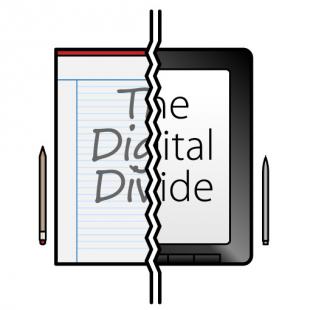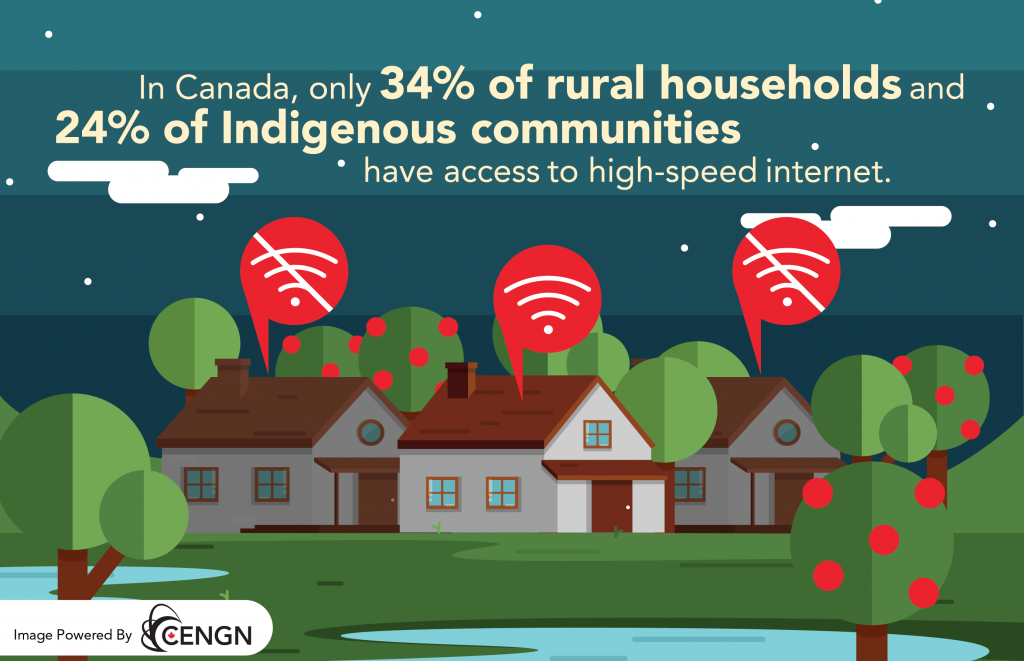Many would think that in 2024, the digital divide would no longer exist. After all, our world functions largely with the use of digital technologies, and the idea that so many inequities still exist seems confounding. Many believe that it is simply a rural/urban problem; however, “the digital divide is comprised of a series of divides that are correlated with socio-economic and demographic factors, including income, age, Indigeneity and ability." (Ryerson University, 2022).
While it is true that our internet infrastructure is lacking in many ways, this can only be addressed with the cooperation of governments and cell providers. Many things need to be addressed on a national level, such as:
“Develop a comprehensive strategy to close Canada’s digital divides, including setting targets for the proportion of Canadian residents connected to sufficient digital services, not just the availability of basic connectivity, and guided by new research that more granularly identifies specific communities facing gaps in internet access and connectivity.
Expand the eligibility of affordability initiatives that subsidize the provision of internet services to include all individuals below the poverty line and ensure services are provided at sufficient speeds.
Explore new public funding models that invest in community-based and owned networks to increase public access, community control and competition, in particular by working with Indigenous communities and municipalities not yet connected to sufficient service.
Develop a cross-sectoral network of public, private and community organizations to coordinate initiatives focused on enhancing digital literacy and access to devices and software for underserved and vulnerable communities, such as older adults, youth, low-income individuals, and people of colour.
Strengthen accessibility standards and initiatives to remove digital inclusion barriers for people with disabilities, including greater enforcement mechanisms.” (Ryerson University, 2022)
Libraries continue to be an important learning community for all. “Public and school libraries have an integral role in bridging the digital divide by providing both education and access tools to their communities because one cannot come without the other.” (Jutras, 2023). As such, they have successfully addressed some of the digital divide challenges over which they have some control.
“Affordability and Public Access: Many libraries have internet services available for free. This allows those who cannot afford the service to use the equipment available to them at the library while they are there. Some libraries also have the option for clients to borrow WIFI hotspots.
Digital literacy and skills: Many librarians are very familiar with technology and can teach and support those who need help understanding how to use the technology to apply for jobs, programs, pay bills, etc. They may also educate others about internet safety and using technology responsibly.
While the speed with which technology is growing, we will probably never achieve a true end to the digital divide; we can remember that “every time we educate a library professional, and in turn educate a patron, from submitting an online resume or learning the basics of a smartphone to hosting a children’s coding program; and every time we are a part of installing broadband infrastructure in rural and underfunded schools; we celebrate a win, an achievement, a betterment of our communities and peoples’ ability to participate in society.” (Jutras, 2023).
References
Jutras, J. (2023). Library’s educational role in bridging the digital divide. Pathfinder: A Canadian Journal for Information Science Students and Early Career Professionals, 4(1), 19–27. https://doi.org/10.29173/pathfinder85
Nell, A. (2021). How COVID-19 is Impacting the Digital Divide. Canada’s Centre of Excellence in Next Generation Networks. Retrieved June 9, 2024, from https://www.cengn.ca/information-centre/innovation/how-covid-19-is-impacting-the-digital-divide/.
Ryerson University. (2022, January 26). New Ryerson Leadership Lab Report — Overcoming Digital Divides: What We Heard and Recommendations. Librarianship.ca. https://librarianship.ca/news/overcoming-digital-divides/


It is often hard to consider other perspectives when you are in a space in your life with internet access, internet communication, and internet knowledge. I can't think of a place I've been where I've gone without. I do love that libraries can help teach people about the functionality of internet- paying bills and communicating. Here, I was impressed to see a seniors-tech-drop-in session every week at the public library! But what about places where libraries don't have trained staff, internet access or may not even be present. Hard for me to imagine from my bubble. But as you quoted, training library professional and thus patrons can begin to bridge the gaps.
ReplyDeleteThis quote resonates with me “every time we educate a library professional, and in turn, educate a patron….we celebrate a win, an achievement, a betterment of our communities and peoples’ ability to participate in society.” This is true for all of us in the library field whether school or public. As librarians, we can have a profound impact.
ReplyDelete